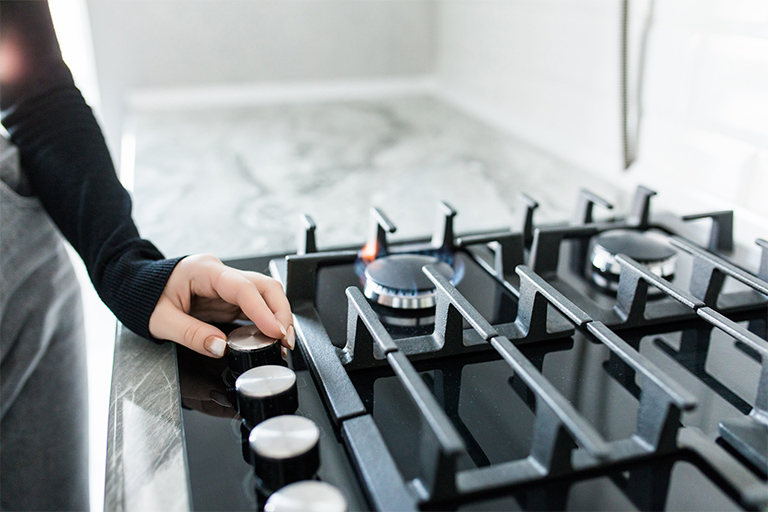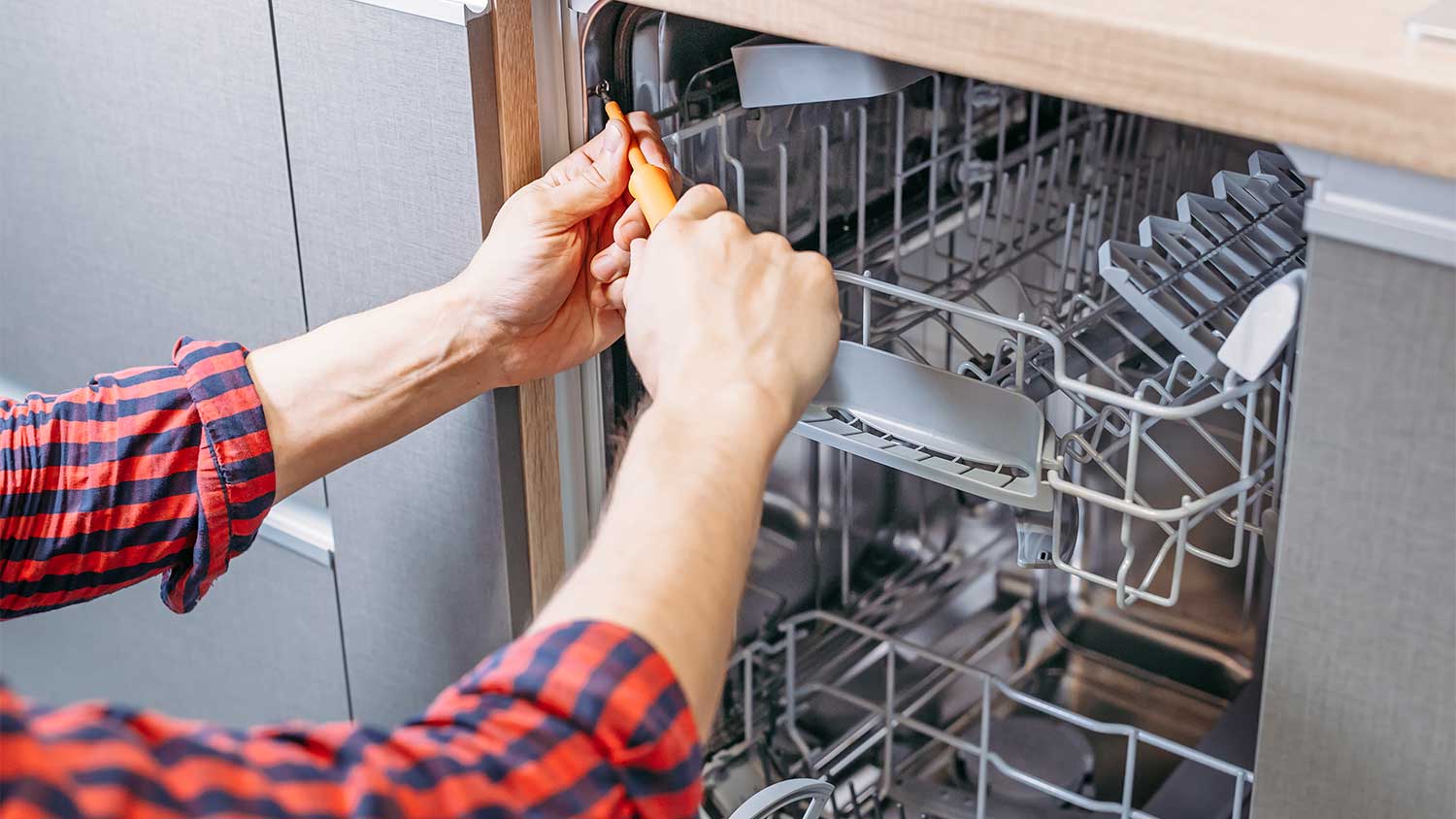
If your refrigerator has been damaged, refrigerator door dent repair cost will vary based on the imperfection's size, depth, and location. Use our guide to estimate how much you'll spend on refrigerator dent repair.
The cost to install gas cooktop averages $1,700, with most homeowners paying between $1,200 to $2,200. Factors include cooktop size, labor, and gas line requirements.


The key factors that affect the cost to install a gas cooktop are cooktop size, labor, and gas line work.
Gas cooktop installation requires professional expertise for safety and to ensure installation follows local codes.
Professional gas cooktop installation pros charge $50 to $150 per hour, with minimum service fees around $100.
Annual gas cooktop maintenance costs average $75 to $150 and extend the life of the cooktop.
This article was created using automation technology and thoroughly fact-checked and edited by an Angi Editor in accordance with our AI policy.
The cost to install a gas cooktop ranges from $1,200 to $2,200, with an average homeowner spending about $1,700 for a standard installation. Prices vary based on cooktop size, labor rates, and whether a new gas line is needed. Most installations are priced per unit, not per square foot.
Compact cooktops in an easy installation area can be as little as $900, while larger cooktops or custom designs can exceed $3,500. This guide breaks down every cost factor and important tip, so you know what to expect before starting your project.
Several key factors directly affect your total cost to install a gas cooktop. Let’s walk through each one, so you know what to expect.
The size of your gas cooktop is one of the most important factors impacting installation cost. The number of burners, overall width, and features all play a role. Compact models with two burners are less expensive to install, while professional-grade cooktops with five or six burners can require more complex gas and countertop work. Standard cooktops (four burners, around 30 inches wide) are the most common choice and tend to be the most budget-friendly.
Keep in mind that oversized or specialty cooktops may require countertop modifications. Fitting a new cooktop into an existing space sometimes involves cutting or reinforcing cabinets, which adds to labor time and cost. Always measure carefully and consult a pro if you are unsure about fit.
| Cooktop Size (Number of Burners) | Description | Cost Range |
|---|---|---|
| 2 | Compact, basic model | $900–$1,400 |
| 4 | Standard size, most common | $1,200–$2,000 |
| 5 | Larger, mid-range or semi-professional | $1,700–$2,500 |
| 6+ | Oversized, professional-grade | $2,200–$3,500 |
Where you live and where you install your gas cooktop both affect your final bill. Labor and permit fees vary widely by region, with urban areas costing more than rural locations. High demand for licensed gas fitters or strict city codes can also drive up the price. Some states require more inspections, which can add both cost and time to your project.
Inside your home, installation location matters too. Installing a cooktop in a standard kitchen is straightforward, but adding one to an outdoor kitchen or a second-floor space can increase labor costs. Older homes may need upgrades to gas lines or ventilation, while tight or hard-to-access spaces require extra time and expertise. If your layout is unusual, expect both labor time and price to rise.
You’ll need a licensed plumber or gas fitter for most gas cooktop installations. Some projects also call for a general contractor, especially if countertop or cabinetry work is involved. Labor rates range from $50 to $150 per hour, with minimum service fees often starting around $100. Standard installations take two to four hours, but complex projects can take longer. Emergency or after-hours work costs more, and rates are higher in urban regions.
Most municipalities require a permit for gas appliance installation. Permit fees range from $50 to $300, depending on your location. You’ll also need at least one inspection, which might be included in your permit fee or billed separately. Skipping permits can lead to fines, denied insurance claims, or safety risks—so always check local requirements and budget for permitting.
Upgrades and add-ons can quickly increase your installation cost. Downdraft ventilation systems, smart controls, or custom finishes all come with higher price tags. Adding or upgrading a ventilation system can cost several hundred dollars, and integrating your cooktop with other appliances (like a wall oven or smart home system) often requires extra wiring or setup. Optional safety features, such as auto shut-off or child locks, also add to your total.
Most gas cooktops come with manufacturer warranties covering parts and labor for one to five years. Extended warranties, which provide longer coverage or extra protection, can add $100 to $300 to your upfront cost. Some installers also offer labor warranties, which can be valuable if issues arise after installation. Good warranties reduce long-term repair or replacement costs.
Your new gas cooktop will have ongoing operating costs, mainly natural gas usage. Expect to pay $5 to $15 per month, depending on how often you cook and local gas rates. This is lower than the cost to run an electric cooktop. Gas utility rates vary by region, so check with your provider for the most accurate estimate.
Routine maintenance keeps your cooktop running safely and efficiently. Plan to clean burners and check connections regularly. Annual maintenance costs average $75 to $150. Common repairs—like igniter or valve replacement— cost $100 to $250. Professional inspections every few years are recommended to check for leaks and ensure safe operation.
Some homeowners consider installing a gas cooktop themselves to save money. Let’s look at the real costs and risks. DIY installation can save you $200 to $500 in labor, but it requires advanced skills and specialized tools. You’ll need a gas leak detector, pipe wrenches, and safety equipment, which can cost $100 to $300 if you don’t already own them. DIYers also face risks: gas leaks, code violations, voided warranties, and serious safety hazards. Expect to spend an entire day on the project if you’re not experienced.
Hiring a local licensed pro includes labor, leak testing, code compliance, and a workmanship warranty. Professionals ensure safe operation and can complete the job in a few hours. Some installers offer discounts for multiple appliances or bundled services. Choosing a pro also protects your insurance coverage and helps with required permits.
| Installation Method | Cost Range | Pros | Cons |
|---|---|---|---|
| DIY | $900–$1,500 | Saves on labor, flexible timing | Safety risk, no warranty, code issues |
| Pro | $1,200–$3,500 | Safe, code compliant, warranty included | Higher upfront cost, scheduling needed |
Not sure if you should repair or replace your existing gas cooktop? Here’s what to consider. Minor problems like a faulty igniter or valve can be repaired, especially if your cooktop is under warranty. However, if your appliance is more than 10 years old, needs frequent repairs, or is outdated, replacement is the smarter investment. Warranty status and part availability also influence your choice.
Repair costs for common issues—like igniter or burner replacement—range from $100 to $300. Replacing the entire cooktop, including removal and installation, averages $1,200 to $2,800. If the repair cost approaches 50% of a new unit, replacement is the better value.
Installing a gas cooktop can offer a strong return on investment (ROI), especially if you upgrade from electric or have an outdated model. Kitchen upgrades involving gas cooktops yield an ROI of 60% to 80%, making them one of the more effective ways to boost home value and attract buyers. A modern gas cooktop appeals to home chefs and buyers seeking energy efficiency and contemporary features. Factors like safety, upgraded controls, and sleek design also improve your kitchen’s overall appeal compared to other kitchen improvements.
There are several ways to keep your gas cooktop installation project wallet-friendly without sacrificing quality or style. Taking these steps can help you save money and get the features you want:
Get multiple quotes from licensed professionals for competitive pricing.
Choose a standard-size cooktop to avoid custom cabinetry or countertop work.
Schedule installation during off-peak times for possible discounts.
Handle removal and disposal of old cooktop yourself if safe.
Purchase the cooktop during sales or bundle with other appliances.
Consider basic models if advanced features are not needed.
Ensure existing gas and electrical lines are up to code to avoid extra work.
Home is the most important place on earth, which is why Angi has helped more than 150 million homeowners transform their houses into homes they adore. To help homeowners with their next project, Angi provides readers with the most accurate cost data and upholds strict editorial standards. We extensively research project costs to develop the pricing data you see, so you can make the best decisions for you and your home. We rely on reputable sources, including the U.S. Bureau of Labor Statistics, academic journals, market studies, and interviews with industry experts—all to ensure our prices reflect real-world projects.
Want to help us improve our cost data? Send us a recent project quote to [email protected]. Quotes and personal information will not be shared publicly.
From average costs to expert advice, get all the answers you need to get your job done.

If your refrigerator has been damaged, refrigerator door dent repair cost will vary based on the imperfection's size, depth, and location. Use our guide to estimate how much you'll spend on refrigerator dent repair.

Get expert insights on dishwasher repair cost, including average prices, key cost factors, and tips to save money on repairs.

Get transparent refrigerator repair cost info. Learn what impacts price, compare repair vs. replacement, and find ways to save on your fridge repair.

Calibrating your oven is usually a simple task you can do in less than an hour. Read here to learn how, no matter what type of oven you have.

Finding the right pro to install your new washer and dryer will help the machines work better, last longer, and ensure everything is connected correctly.

Discover why your pellet stove is not igniting and learn effective troubleshooting tips to fix the issue. Keep your home warm with our expert advice!